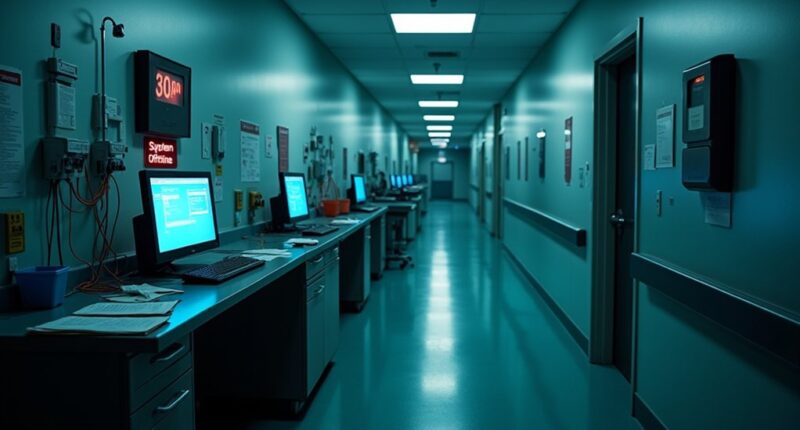Hackers struck again. This time, they hit the Yap Department of Health Services in Colonia with a vicious ransomware attack on March 11, 2025. The entire network went dark at 3 p.m. as officials scrambled to contain the damage. Everyone’s favorite response? Turn it all off and hope for the best. Classic.
The impact was immediate. Digital health systems shut down completely. No internet, no email, just healthcare providers suddenly thrust back into the 1980s. Patient care continues, sure, but with delays that’ll test everyone’s patience. Officials are “urging understanding” – as if patients have a choice.
Digital systems down, providers time-warped to the pre-internet era. Please understand while your healthcare crawls to a standstill.
This attack isn’t exactly shocking. Healthcare organizations are prime targets – 67% got hit in 2024 alone. The average ransom? A cool $4.4 million. These criminals know exactly what they’re doing. Hospitals pay up because lives are literally on the line. Research shows that these attacks may actually lead to increased patient mortality as critical care is disrupted.
Recovery won’t be quick. Similar attacks typically take over a month to resolve, and that’s assuming backups weren’t compromised – which happens 95% of the time. Nearly all healthcare organizations report these incidents to law enforcement agencies for assistance. A comprehensive risk assessment could have identified the vulnerabilities exploited in this attack before disaster struck. Meanwhile, everything switches to paper records. Appointments canceled. Surgeries postponed. The whole healthcare machine grinds to a painful halt.
The FSM health department is working with private IT contractors to assess the damage, while coordinating with the national Department of Health and Social Affairs. They promise updates “as the situation develops.” Translation: don’t hold your breath.
Most attacks exploit vulnerabilities or compromised credentials. Some poor employee probably clicked a sketchy email link. One click, millions in damage. The average recovery cost hits $2.57 million – not counting the ransom itself.
Meanwhile, patient data sits somewhere on the dark web, ready for sale to the highest bidder. Healthcare records fetch premium prices there.
For the people of Yap, there’s nothing to do but wait. The wheels of digital restoration turn slowly. Very slowly. But hey, at least officials “assure” continued patient care. Feeling better already, right?









